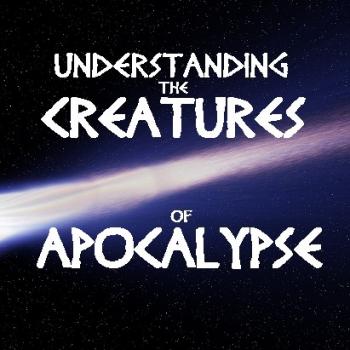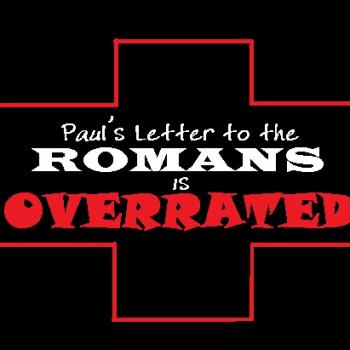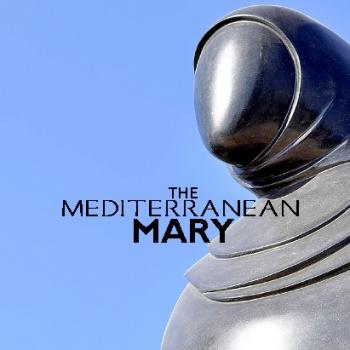
Christians, evolution is real, and pietism drove it to develop the Passion Story in Mark’s Gospel.
Evolution and Gospel stories go hand in hand. Christians need to make peace with evolution, not only the biological variety but also the kind evident in the New Testament writings. It is especially apparent in the reading from the Common Lectionary for Palm Sunday, the Passion According to “Mark” (14:1—15:47).
To see what I mean, check out the video presentation here—
Evolution & Markan Priority
“Mark” is the earliest narrative Gospel. The two other Synoptic Gospel authors—“Matthew” and “Luke”—depended on “Mark.” Without “Mark,” their own narratives about Jesus would be unrecognizable, or probably just not be. Ultimately, no “Mark” means no evolution of “Matthew” and “Luke.”
Scholars can be sure of this “Markan priority” due to patterns of agreements in the Synoptics, a shared basic sequence of stories, and the particular ways both “Matthew” and “Luke” change their Markan source. By this and other scholarly arguments, we can be sure that “Mark” came first and that “Matthew” and “Luke” used “Mark” as their source.
Hence, the passion story in “Mark” is the earliest Gospel-form of it we know. As we’ve explored elsewhere, the Gospels demonstrate “third-generation interest.” In other words, the Gospels were written by third generational people living after the time of Jesus. Consequently, their authors were probably not alive when Rome crucified Jesus or when disciples proclaimed him risen.
Before the Evolution, the Earliest Passion Account
This raises important questions. According to the passion story in “Mark” (14:1—15:47), every follower Jesus handpicked abandoned him (14:50). One follower betrayed him (14:10), while another denied him (14:66-72). So no intimate follower of Jesus was present for Jesus’ tortures and crucifixion. Decades later, “Mark,” wrote his Passion report. Ultimately, from where did he get all this information?
Could a pre-Markan passion story have existed before the anonymous author called “Mark” wrote his story? Surely. Some scholars believe it did, and that “Mark” borrowed from that story. Do we see such an earlier account?
Indeed we do,
1 Corinthians 15:3-8
For I handed on to you as of first importance what I also received:
that Christ died for our sins
in accordance with the scriptures;
that he was buried;
that he was raised on the third day
in accordance with the scriptures;
that he appeared to Kephas,
then to the Twelve.
After that, he appeared to more than five hundred brothers at once, most of whom are still living, though some have fallen asleep. After that he appeared to James, then to all the apostles. Last of all, as to one born abnormally, he appeared to me.
See that part in red? That’s it!
Pre-Pauline
The red words above, together with the blue, present us with the most ancient traditional element we have as Christians—the Passion Story. Yes, the resurrection account also, right there with it. But for the moment, put that blue line aside. Read this earlier Passion Story over again carefully. It’s pithy, no? Tell me, does it say anything about…
-
Jesus being arrested in a garden when his (armed) followers and bodyguards abandon him (Mark 14:32-52)?
-
Jesus forced to endure an initial status degradation ritual meant to destroy him (Mark 14:53-65)?
-
Peter’s disloyalty (Mark 14:66-72)?
-
Jesus forced to endure another status degradation ritual before Pilate and soldiers (Mark 15:1-20)?
-
The final degradation for Jesus being crucified (Mark 15:21-41)?
-
Jesus being buried with Israelite elites (Mark 15:42-47)?
The historical Paul did write the document we call “1 Corinthians.” He probably wrote this letter in Ephesus, sometime between August 52 and October 54, in the first century, CE. But those red and blue words above come from even earlier times. Thus, the lines are pre-Pauline. Scholars call these lines a “pre-Pauline kerygmatic formula.” The Jesus-group at Corinth had memorized those lines first spoken within twenty years of Jesus’ death and resurrection.
Evolution & Differences
By comparison, the Passion Story found in “Mark” (14:1—15:47 ) was composed around 70 CE. Get out your Bible or click on the links to compare 1 Corinthians 15:3b-5 with Mark 14:1—15:47. Look at that difference! It’s colossal!
Then consider the tremendous difference and disagreement between the Passion Story in “Mark” (Mark 14:1—15:47) and the Passion Story in “John” (18:1—19:42). The agreement between the Markan Passion and the Johannine Passion is just a mere 15.5 percent! That’s a whopping 84.5 percent disagreement! Clearly, “Mark” didn’t read “John,” and vice versa.
Unless you are a fundamentalist, you should see that the story of Jesus’ Passion grew more complex long before “Mark” wrote his Gospel. In fact, there were multiple versions of the evolving story floating around before “Mark.” How else can we explain why Jesus says so much in the Passion accounts of “Luke” and “John” than he does in “Mark”?
Evolution of the “Last Supper”
This is true of the “Last Supper” scenes as well. Jesus barely says anything in “Mark” or “Matthew,” who slavishly follows the former Markan story. But “Luke” explodes with dialogue—his Jesus has so much more to say.
And the Last Supper in “John”? Wow, it is so different! Unlike in the Synoptics, for “John,” it is a farewell dinner and not a Passover meal! And “John” entirely omits the institution of the Eucharist! He instead writes about a foot-washing that is found nowhere in “Mark,” “Matthew,” or “Luke.” Next, come four chapters of dialogue between the Johannine Jesus and his innermost circle. What gives? Why these tremendous differences?
Evolution via Pietism
Looking back at 1 Corinthians 15:3b-5, it becomes evident that both “John” and “Mark” embellished and invented many details. From where does all this development come?
Pietism says Context Scholar John Pilch. Yeah, some of it was the memory of actual events, many of which were not seen closely. None of them got recorded with video-precision and exact factual accuracy. The evangelists were neither eyewitnesses nor journalists seeking “just the facts!”
Some of it is theological fiction meant to convey the more profound truth about Jesus, invented scenes and details intended to bring out the meaning of Jesus. In any case, the engine that drove the evolution of the Passion Narratives was pietism.
More Than Just Facts
Yes, Jesus existed historically. Yes, he really died. And he was crucified—no friend of Jesus had to be present at the Cross to eyewitness what happened to Jesus. They would have been too embarrassed to invent such a shameful death for him.
But what about the details of what happens between his arrest and the disposal of his body? This “uppity” peasant nothing-person was condemned by Pontius Pilate, sure. But did he really have a dialogue with the prefect? Or did the procurator merely sign an order? It’s okay that things develop and that our Gospels are not 21st-century fact-precise biographies. Not everything revolves around us and our obsessions, Americans. Lent is a good time for metanoia—the world doesn’t revolve around YOU!
Despite Scott Hahn and his friends’ best efforts, the Catholic Church, in official documents, acknowledges the evolution of New Testament writings and the Passion story.
Vatican II’s Dogmatic Constitution on Divine Revelation, or Dei Verbum (§19), the Pontifical Biblical Commission’s, “Instruction on the Historical Truth of the Gospels” (§6-9), and the Universal Catechism (no. 126), recognizes a three-stage process of development.
Evolution & Easter
Everything for the story of Jesus begins with the Resurrection. Easter is Ground Zero for everything else, not Good Friday. Without Resurrection appearances, no one would have written anything other than a footnote about Jesus or his shameful death.
In those post-resurrection appearances, Israelites learned that Jesus was raised and exalted by the God of Israel. What else would be needed to empower first-century Mediterranean believers? As Pilch explains, only afterward did interest and concern grow for the events that led up to Jesus’ death.
In the next several posts, we will use cultural insights to explore the Passion Story by way of honor and shame and pain and suffering.












